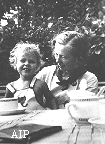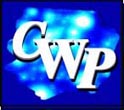OTHER PUBLICATIONS:
"Dynamic Lattice Theory of Crystals,"
Handbuch der Physik 24, part 2: 623 (1931), with Max Born.
"The polarizability of ions from spectra"
Phys. Rev. 43: 605 (1933), with Joseph Mayer.
"On the states of aggregation"
Jrl. Chem. Phys. 2: 38 (1934), with K.F. Herzfeld.
Statistical Mechanics. New York: John Wiley & Sons, 1940, with Joseph Mayer.
"Calculations of equilibrium constant
for isotopic exchange reactions" Jrl. Chem. Phys.
15: 261 (1947), with Jacob Bigeleisen.
"On the origin of the elements" Phys.
Rev. 76: 1226 (1949), with Edward Teller.
"Nuclear shell
structure and beta decay" Rev. Mod. Phys.
23: 315 (1951), with S.A. Moszkowski and L.W. Nordheim.
"Radioactivity and nuclear theory" Ann. Revs. of Phys.
Chem. 3: 19 (1952).
"Classification of beta transitions," in Beta and Gamma
Spectroscopy, Chapter 16.1. North Holland
Publishing, Amsterdam 1955.
Honors
Member Heidelberg Academy of Science 1950
Member National Academy of Sciences 1956
Nobel Prize in Physics (with J.H.D. Jensen) 1963
"For their discoveries concerning nuclear shell structure."
The American Physical Society awards a prize in her honor,
The Maria Goeppert Mayer Award
,
annually to an outstanding woman physicist.
Jobs/Positions
1931-39 Volunteer Associate Johns Hopkins University
1939-46 Lecturer, Columbia University
1941-42, 1945 Part-time Teacher, Sarah Lawrence College
1942-45 Manhattan Project
1946-59 Volunteer Associate Professor and Full Professor University of Chicago
1946-60 Senior Physicist Argonne National Laboratory
1960-72 Professor University of California at San Diego

Education
Ph.D. University of Goettingen 1930
Sources
A more detailed discussion of her contributions is given by Robert
G. Sachs, "Maria Goeppert Mayer, A Biographical Memoir," in Biographical Memoirs vol. 50. National Academy of Sciences, 1979, pp. 309-328.
Additional Information/Comments
Goeppert-Mayer was the first woman to win the Nobel Prize for
theoretical physics.
Further information about her life and her physics may be found in Professor
S. A. Moszkowski'
MARIA GOEPPERT MAYER HOMEPAGE
. Professor Moszkowski's doctoral dissertation was written under
her supervision.
Biographical print references:
A Life of One's Own, Joan Dash, Harper Row, New York 1973
Nobel Prize Women in Science, Sharon Bertsch McGrayne, Birch Lane Press,
New York 1993
Einstein's Wife, Andrea Gabor, Viking, New York 1995.
Married Joseph Mayer with whom she had two children - Marianne and Peter.
Field Editor: Professor S. A. Moszkowski
<stevemos@ucla.edu>
 Welcome
to CWP at UCLA
Welcome
to CWP at UCLA  Welcome
to CWP at UCLA
Welcome
to CWP at UCLA